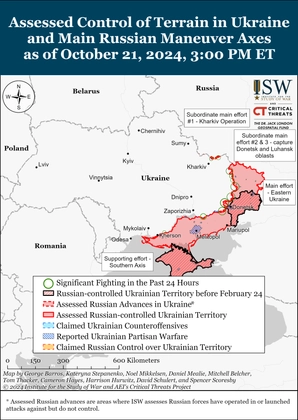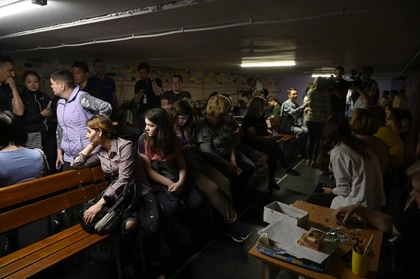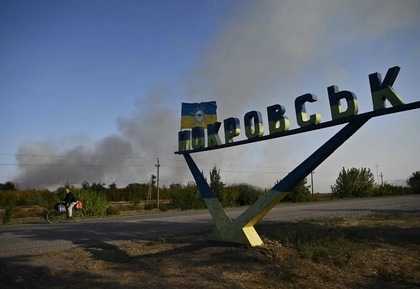Following a month of night and daytime missile and drone attacks on the capital, Kyiv’s air defenses have been mostly successful in preventing Russian weapons from reaching their targets. But even when the air assaults are thwarted, debris from the interception can still cause damage and even death to the unsuspecting. And even when residents have sought shelter, as recommended by officials, they may not have found it to be available.
Unfortunately, this was highlighted in a recent tragedy where people sought shelter during curfew and found it closed. Three people died immediately outside an officially designated shelter that was closed. Now, government authorities are responding after the public outcry.
JOIN US ON TELEGRAM
Follow our coverage of the war on the @Kyivpost_official.
Air raid shelters are being checked all over Ukraine. Throughout May, the whole country suffered under intensive missile attacks and on June 1, a young woman and a child were killed in Kyiv, near the entrance to a closed bomb shelter.
Thorough checks were ordered and the results were not encouraging. Although a huge budget was allocated for the setting up and repair of shelters, a large number were found to be in an unfit state or closed, or both.
The two recent deaths in Kyiv have given rise to new attacks on the city’s mayor, Vitali Klitschko, including from Zelensky’s administration, but these a have accusations have somewhat backfired because responsibility for bomb shelters is shared equally by the civil administration and the city’s military administration whose officials are appointed directly by the presidential office.

ISW Russian Offensive Campaign Assessment, October, 22, 2024
Schools and other educational institutions are now under particular scrutiny. According to the rules, their shelters should allow for the continuation of the educational process during air raids. A year ago, Uzhhorod State University was able to hold entrance exams in their underground shelter. However, not all educational institutions have bothered about such facilities and prosecutors' offices are now using threats of legal action against the directors of schools and colleges to force them to clean up their basements.
In Chernihiv, the regional court recently ordered the director of a school in Kozeletsky district to repair its shelter. The judge did not accept the director’s excuse that no funding had been allocated for the work. Indeed, many tasks aimed at ensuring the safety of the civilian population are being carried out without any extra funding. To some extent, this stems from the Soviet tradition of requiring parents to pay for and carry out repairs to school premises during the holidays.
But now city administrations are finding other free sources of labor for such tasks. For more than a year, the “Army of Renewal” has been working in Chernihiv. It consists of people who are officially registered as unemployed and who agree to participate in work to repair shelters and other facilities in the city and the region. Some three thousand unemployed people are currently helping in this way.
Chernihiv region, located on the border with Belarus and Russia, is large and sparsely populated. There are few roads and many swamps and rivers. Some villages are very difficult to reach. When the Russian army seized part of the region in March last year, it was unable to gain a foothold because of the nature of the terrain. In the end, they had to retreat.
In recent months, Russia has regularly shelled border villages and towns with rockets, drones, and artillery, but has made no new attempts to seize territory and that is probably why the Mezvinsky nature reserve, which covers more than 300 square kilometers and is only an hour’s drive from the Russian border, has opened its hotels and started inviting lovers of nature and ornithologists to come and enjoy the summer there.
The reserve boasts two museums, and for lovers of archeology, there are more than fifty sites of interest, including the remains of an ancient settlement from the Paleolithic era – more than 20 thousand years old.
The war has required some adjustments to the rules for visiting the reserve. You can no longer go kayaking and boating on the rivers and lakes, but you can ride jeeps along a specially prepared forest route. For SUV lovers, there are also opportunities to test your driving skills and the capabilities of your car.
The thousand-year-old city of Chernihiv is also trying to live an ordinary life. Shops, cafes, and theaters are open, but tourists from other regions of Ukraine are in no hurry to visit. The all-Ukrainian competition for young pianists, which is held in Chernihiv every two years, was this time attended by participants from only two other regions of the country – the front-line regions of Kharkiv and Mykolaiv. Anastasia Grushko, from Kharkiv College of Music, who won first prize in the competition said that the biggest challenge had been the constant air raid warnings that made preparation very difficult.
Nonetheless, she has two reasons to feel lucky – there were no sirens during her performance, and she fulfilled her dream of playing with a Philharmonic Orchestra.
The border with Russia in the Chernihiv region could certainly be called a front line. Few people live here anymore. The rare villages have been mostly left in ruins. But on the border with Belarus, it’s quiet and calm, running as it does through impenetrable swamps and forests. Locals, of course, know all the secret paths and tracks, but for strangers this terrain is deadly. During World War II, thousands of German soldiers died in these swamps.
Now the checkpoints on the border with Belarus are closed, official trade with Russia’s ally is prohibited, but local smugglers quietly continue to ply their trade. Smuggling activity here is very different from what goes on along the western borders of Ukraine, where cigarettes are the main illegal goods.
Judging by the latest news, the key object of smuggling operations from Belarus is insect repellent. Before the appearance of the Russian army, the main enemies of Chernihiv region residents were mosquitos.
Recently local entrepreneurs tried to smuggle a batch of repellent by car from Belarus to the Chernihiv region through Poland. Almost three and a half tons of fumigator plates from Belarus were discovered by Ukrainian customs officials. The cargo was confiscated, but I hope that it will eventually end up in Chernihiv region – one of the most mosquito-blighted regions of Ukraine.
Apart from anything else, the less that residents Chernihiv region residents have to worry about mosquitoes, the faster they will be able to put their bomb shelters in order.
The views expressed are the author’s and not necessarily those of Kyiv Post
You can also highlight the text and press Ctrl + Enter






